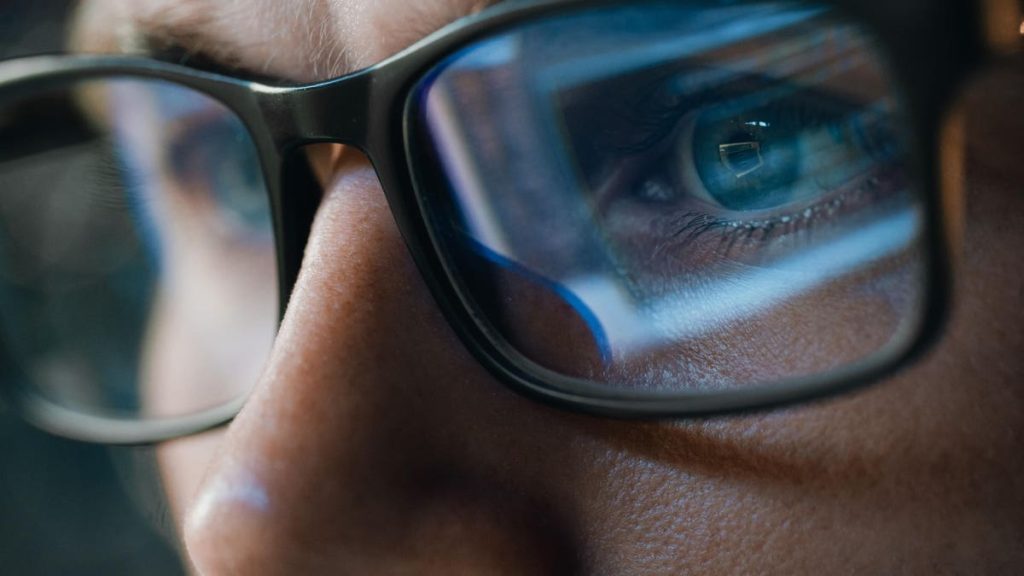Topline
A new study concluded that blue light glasses probably have no greater effect on the eyes than non-blue light glasses, contradicting research that says they help with eye strain, sleep quality, headaches and overall eye health.
Key Facts
A new meta-analysis published in the Cochrane Database of Systematic Reviews discovered blue-light glasses may not make a difference in sleep quality, eye strain or eye health.
The researchers looked at data from 17 studies from six countries with the number of adult participants ranging from five to 156 patients.
A study published in the International Journal of Ophthalmology found that blue light—which is emitted from digital, LED devices—could potentially cause stress on and damage the retina, resulting in nearsightedness and affecting sleep patterns.
However, because LED devices are so new, researchers say there isn’t much research on the long term effects blue light has on the eyes.
While the study found blue light could stress the retina and affect sleep, it also found that blue light glasses may not be the solution: The meta-analysis concluded that none of the 17 studies had drastically different visual fatigue or visual performance scores between blue light glasses and non-blue light glasses.
Crucial Quote
“We found there may be no short-term advantages with using blue light filtering spectacle lenses to reduce visual fatigue associated with computer use, compared to non-blue light filtering lenses,” Laura Downie, senior author of the review, said in a statement. “It is also currently unclear whether these lenses affect vision quality or sleep-related outcomes, and no conclusions could be drawn about any potential effects on retinal health in the longer term. People should be aware of these findings when deciding whether to purchase these spectacles.”
Key Background
Blue is one of seven colors in the visible light spectrum. Consistent exposure is believed to damage the retina and cause vision problems, like age-related macular degeneration—an eye disease caused by aging that blurs central vision. What makes blue light dangerous is its short, high energy waves, Healthline reports. They’re only a little longer and less powerful than UV waves, which have harmful effects on the skin and eyes. Contrary to popular belief, the sun is the biggest producer of blue light, not LED devices like mobile phones and computers. Fluorescent light bulbs and incandescent light bulbs also produce blue light. Blue light glasses are made to block and filter out blue light, reducing its potentially harmful effects. Ophthalmologist Nicole Bajic told nonprofit medical center Cleveland Clinic that although wearing blue light glasses isn’t harmful, if patients have light sensitivity, they should look into getting an FL-41 tint instead. FL-41 filters out blue and green light and the tint can be added to just about any lenses.
Surprising Fact
Children are more susceptible to the risks blue light poses because their eyes absorb more blue light from electronic devices, according to a study by the National Eye Institute. The study reports American children under the age of eight spend on average more than two hours a day on digital devices while those between the ages of eight and 10 spend six hours a day, and kids between 11 and 14 spend nine hours. The blue light from the devices causes stress to the retina and computer vision syndrome, a condition that involves eye strain, headache, posture issues and fatigue-related discomfort.
What’s Blue Light, and How Does It Affect Our Eyes? (Healthline)
Do Blue Light Glasses Work? (Cleveland Clinic)
Read the full article here










